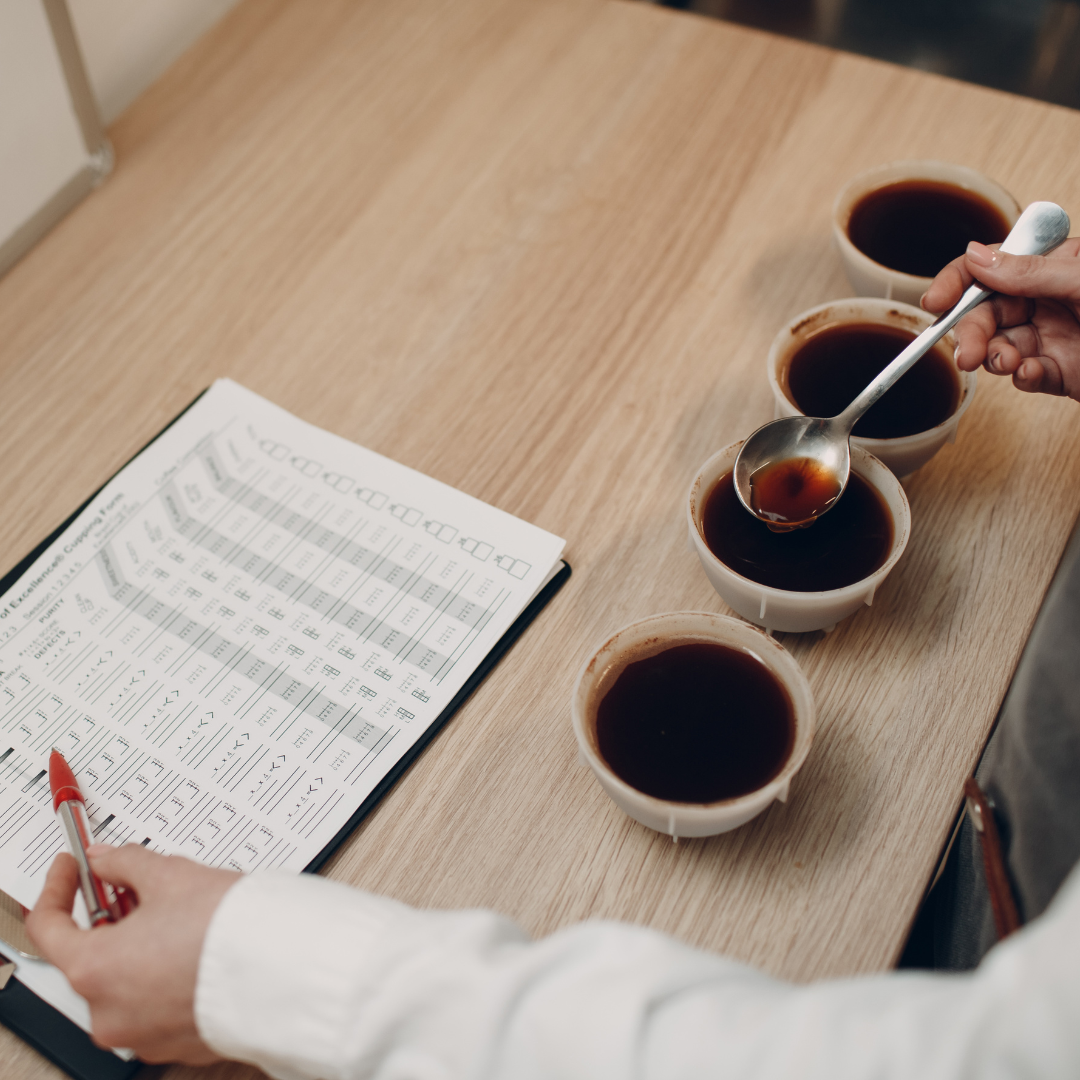
Coffee Cupping (Tasting) 101
Share
Any specialty roaster will tell you that the first step to roasting better coffee is to develop your palate. Entering the industry a few years ago, this was news to me. How did the two things relate? It all makes sense now but in my early days, I was perplexed.
It’s quite simple if you break it down. As a chef, if you don’t have a developed palate, can you really produce plates that are perfectly seasoned, properly cooked? Same thing applies to a roaster; if you cannot taste your coffee properly, you’ll never be able to do the coffee justice. Coffee cupping (tasting) is instrumental for roasters in all parts of the roasting process, from sourcing/sampling green to perfecting the roast profile of coffees and ensuring ongoing quality. It truly is the best way to analyze coffee in its most basic form and determine its potential before using it in other brew methods.
What is coffee cupping all about? Cupping allows you to analyze multiple coffees at a time through a very quick and simple brew method. I’d say it’s most similar to the French press brew method, with differences. You grind each coffee into a small cupping bowl (or cup if you don't have traditional cupping bowls) and pour water into each bowl and let the coffee brew. A crust of coffee grounds will form on top and after a few minutes the crust is broken with a spoon and the film on top is skimmed off and discarded (you don't want to get coffee grounds in your mouth while tasting!).
Once the coffees are cool enough, normally at the 15-minute mark, they are ready to be tasted. This is traditionally done using a cupping spoon and slurping a small amount of each coffee into your mouth one-by-one. What do you taste? Sweetness, bitterness, acidity? All three? What about the aftertaste - is it pleasant, non-existent, harsh? What about mouthfeel? Cooler coffee allows for a better analysis so don't rush the process. The best part is that you can do it at home and develop your palate overtime if you practice it often enough. It’s a lot of fun once you get the hang of it and it’s really cool to see how different coffees and roast profiles differ and enhance certain flavours.
In one of the first roasting courses I took, we cupped 18 coffees at once on the first day. A few hours later we did it again. A few hours after that we were back at it again. I was not prepared for this level of intensity but it definitely made me learn quickly. I got back to my hotel that evening and ate the equivalent of two dinners! I was mentally exhausted from all of the coffee analyzing, I was physically exhausted from all of the actual roasting we were doing, and everything together had made me ravenous. Moral of the story – hydrate before and after cupping, eat a proper breakfast and lunch, and ease into it so you don’t get overwhelmed!
James Hoffman (former World Barista Champion) does a great video on how to properly cup coffee at home. I highly recommend you check it out here! I could lay out the steps on how to cup coffee but James does such a great job of it already, plus he’s hilarious!
One important point that James touches on is to hide the coffee bags once you’ve weighed your coffee out and I want to double down on this. I was taught to always cup coffee blind to ensure the most objectivity in my analysis. I swear by this method to this day and I never cup coffee with the bags on the table, nor do I have any other indication of what the coffee might be. It’s a game changer when it comes to developing your palate even further. Simply mark the bottom of your cupping bowls with a marker and you’re good to go!
Have you tried cupping coffee? How did it go? Let me know in the comments below and as always, feel free to reach out if you need any help or tips!
